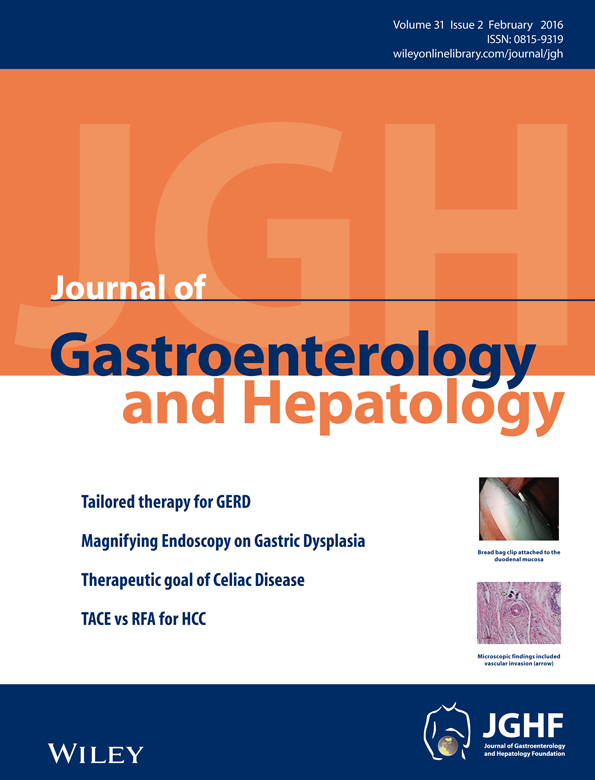Circulating CD147 predicts mortality in advanced hepatocellular carcinoma
Abstract
Background and Aim:
The glycoprotein CD147 has a role in tumor progression, is readily detectable in the circulation, and is abundantly expressed in hepatocellular carcinoma (HCC). Advanced HCC patients are a heterogeneous group with some individuals having dismal survival. The aim of this study was to examine circulating soluble CD147 levels as a prognostic marker in HCC patients.
Methods:
CD147 was measured in 277 patients (110 HCC, 115 chronic liver disease, and 52 non-liver disease). Clinical data included etiology, tumor progression, Barcelona Clinic Liver Cancer (BCLC) stage, and treatment response. Patients with HCC were stratified into two groups based upon the 75th percentile of CD147 levels (24 ng/mL).
Results:
CD147 in HCC correlated inversely with poor survival (P = 0.031). Increased CD147 predicted poor survival in BCLC stages C and D (P = 0.045), and CD147 levels >24 ng/mL predicted a significantly diminished 90-day and 180-day survival time (hazard ratio [HR] = 6.1; 95% confidence interval [CI]: 2.1–63.2; P = 0.0045 and HR = 2.8; 95% CI: 1.2–12.6; P = 0.028, respectively). In BCLC stage C, CD147 predicted prognosis; levels >24 ng/mL were associated with a median survival of 1.5 months compared with 6.5 months with CD147 levels ≤24 ng/mL (P = 0.03). CD147 also identified patients with a poor prognosis independent from treatment frequency, modality, and tumor size.
Conclusions:
Circulating CD147 is an independent marker of survival in advanced HCC. CD147 requires further evaluation as a potential new prognostic measure in HCC to identify patients with advanced disease who have a poor prognosis.




